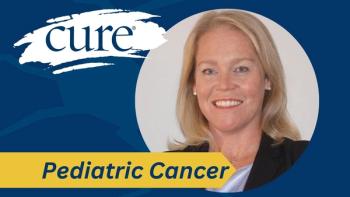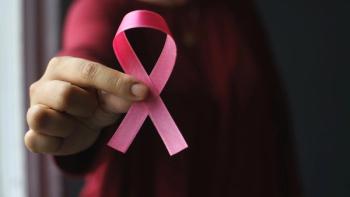
Knowing MRD Status Can ‘Increase Chance of Cure’ in Blood Cancer
Minimal residual disease (MRD) status describes the amount of cancer cells that can be found in the body after treatment, and can lend important insight to prognosis and treatment planning for patients with acute lymphoblastic leukemia (ALL), explained Dr. Michael Pulsipher, division chief of pediatric hematology at Intermountain Primary Children’s Hospital and Oncology, director of the children’s and adolescent cancer initiative at Huntsman Cancer Institute and a presidential chair in pediatric oncology and hematology at the University of Utah.
Depending on what the MRD status is — MRD negativity means that there are no detectable cancer cells found, while MRD high indicates many leftover cancer cells — patients may not necessarily have their fears assuaged by the MRD status itself, but they can be more confident that knowing this information can help lead them toward a cure.
Transcription
When I say that (knowing MRD status) can help, what I mean is it won't necessarily ease their mind, but it will increase their chance of cure.
So the first way is — and I'm going to use ALL, because it's the best studied — you get treated, and you have an exceptional response. And you’re next-generation sequence MRD, negative after only one month. Those patients have such a good prognosis that it's predicted that 98% of the time, they will be cured. That's good news, and that's very reassuring. It doesn't mean you don't have to take your two years of therapy, because you do. What it does mean is that your chance of cure is exceptionally high. And it also means that we can, on an experimental basis, potentially cut back a little of their therapy. And in fact, we do. In our latest protocols, what we do is we do therapy that will help them avoid things that are going to affect fertility, help avoid things that might have long-term neuropsychological issues, that kind of stuff. So it can tell you that your prognosis is really good.
Now, the flip side of that coin, is that when you get these early measurements (at the) end of induction, the end of consolidation, they might show that you are now in a high-risk category. You started out and you're being treated in with a standard induction. If your MRD is high at the end of induction, you're going to go on to the high-risk category. That means all of a sudden, you thought you were just normal prognosis, but no, you're actually hyper high-risk prognosis. Now, is your outcome terribly worse? No, but your treatment is more intense. But the patient shouldn't feel terrible about that. They should feel relieved that, “Oh, good, they know that I have to have this extra therapy, but my chance of survival with the extra therapy is still really good.”
The worst-case scenario, of course, is … you finish your first month (of treatment and) your MRD is high. So you go into high-risk therapy, you finish your second month, your MRD is still high. Now you have to go on to get a transplant or CAR-T cell (therapy). Now, there's just no going getting around it, that's going to be bad news to a patient. They're going to feel like they failed. But in reality, they haven't failed. They... may never have gotten into good remission and may never have gotten curative therapy, but now that we know that they are the 5% that are very high risk, and we get them to either transplant or CAR-T or both early, that improves their chance of cure. So if someone can have zen and can say, “It's okay if I get news from my MRD that I need more intensive therapy because it's maximizing my chance of cure,” then you'll be OK.
For more news on cancer updates, research and education, don’t forget to




